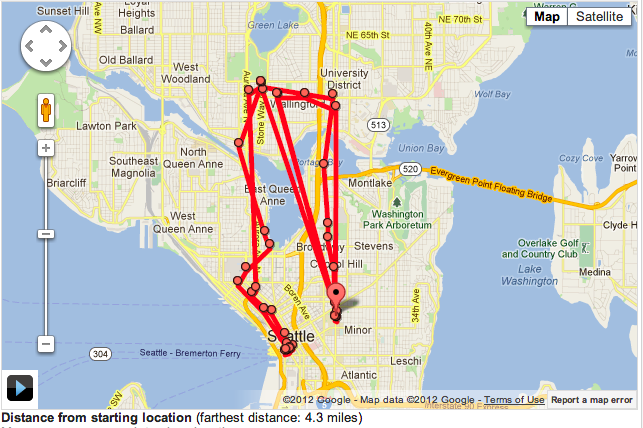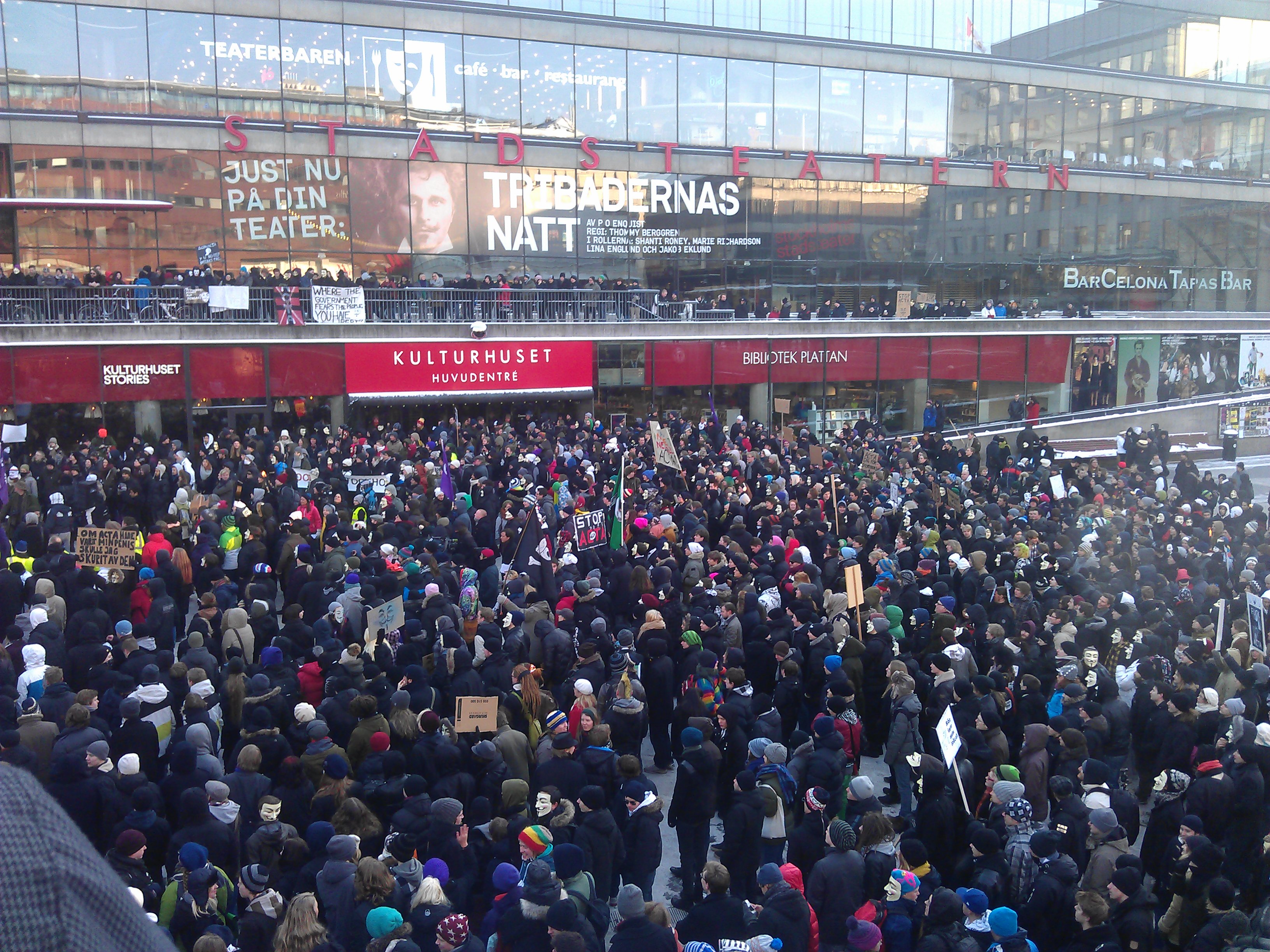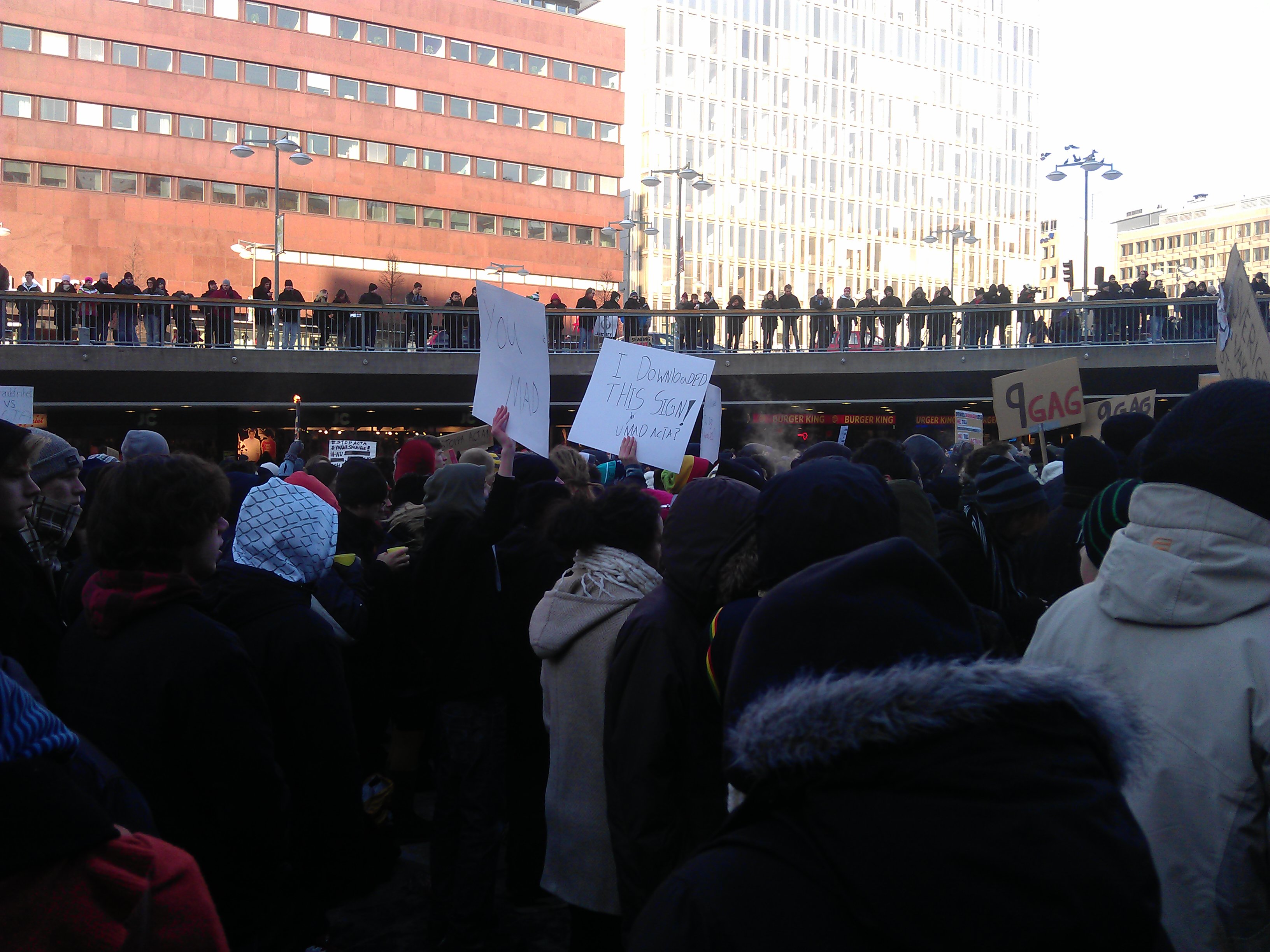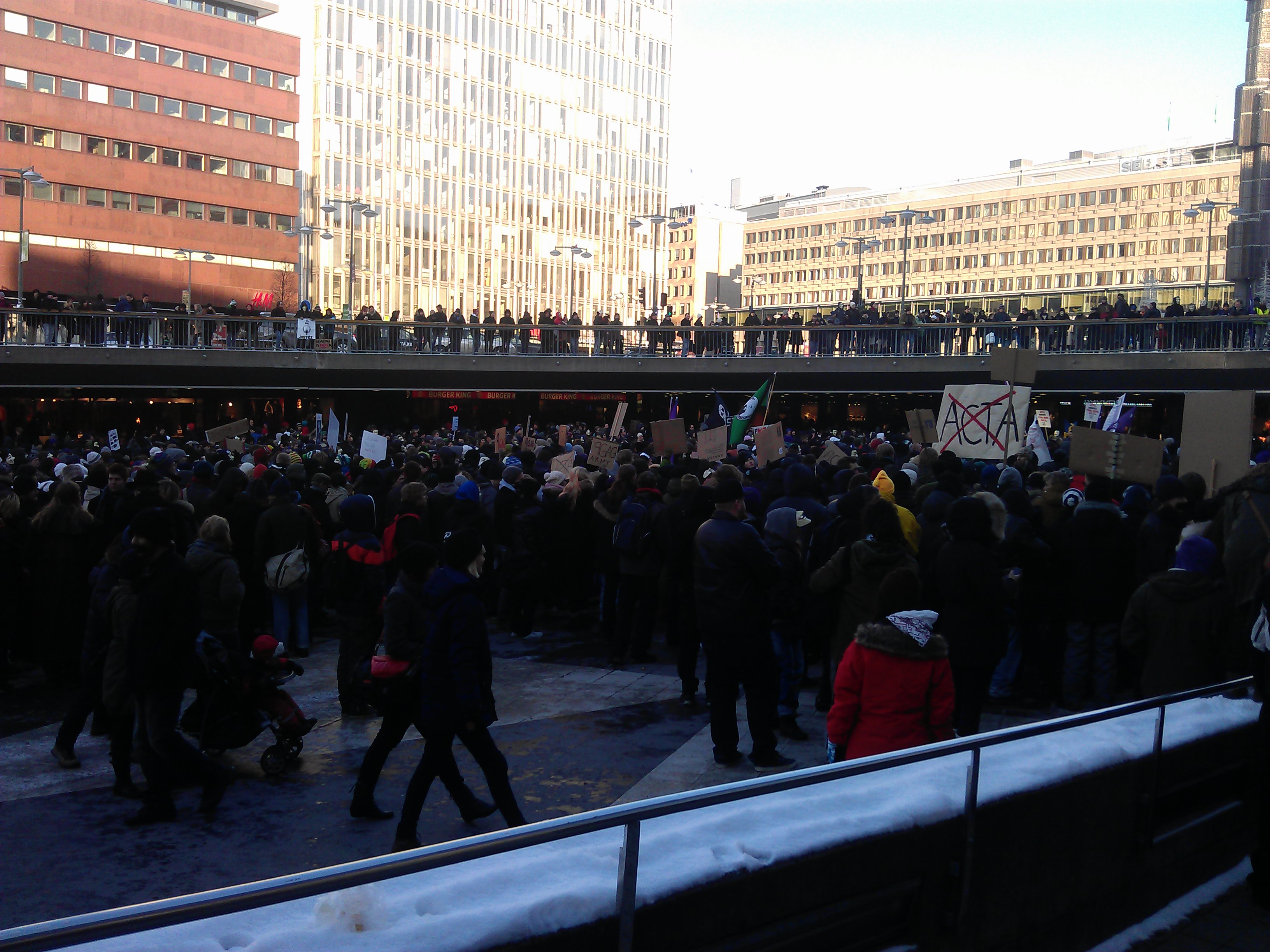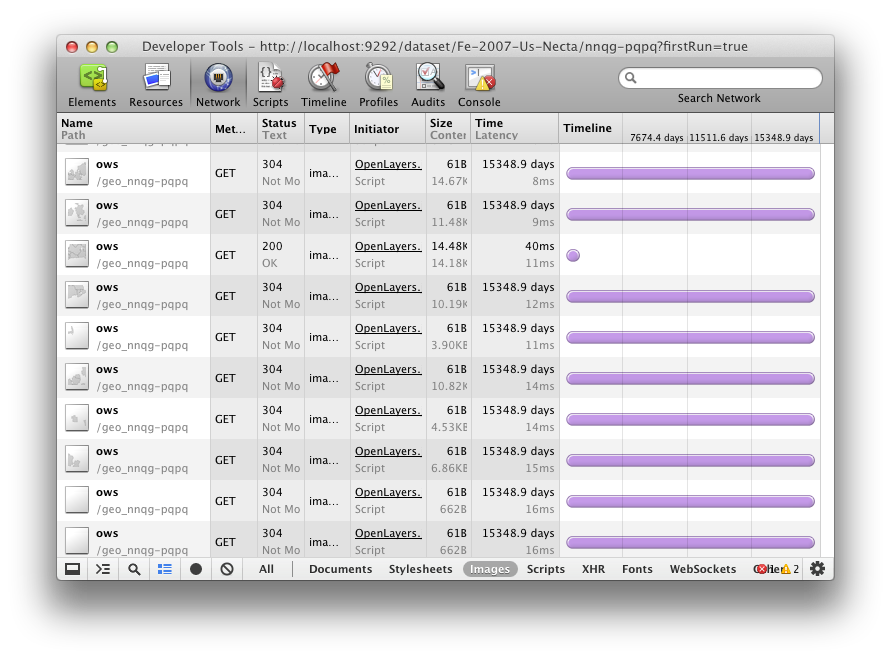Earlier this week I moved from Seattle to Stockholm, where I’ll be working at
Spotify. I arrived and started settling in on Friday.
On Saturday, I decided to check out out the local bouldering scene.
There’s quite a few gyms in the area, and the closest ones to downtown are run
by Klättercentret and Klätterverket.
The Klättercentret in Solna is the place I was really looking forward to
visiting. But since it’s closed for renovation until next week, I instead found
myself at the Klättercentret in Telefonplan.
What I found there was a style of setting I had never seen before on such a
scale — instead of being marked by tape, problems are based on holds that
are of the same color and style.
Here’s a photo of the place by Helena Wahlman at the Swedish photo blog:
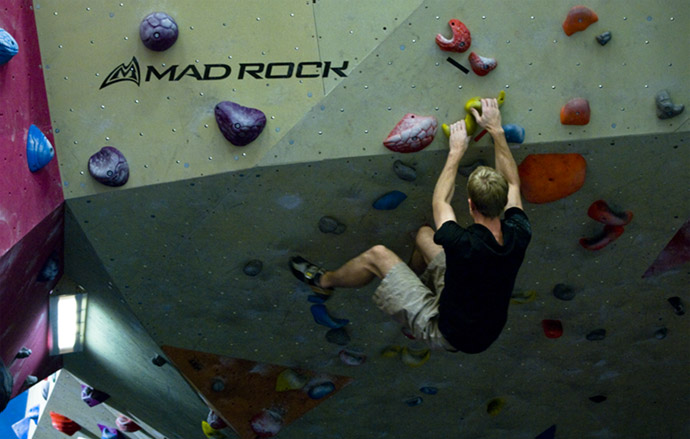
Look closely and you’ll see that there’s pretty much no tape on the wall. For
example, neither of the holds the guy in the photo is using are marked. Instead,
he knows to use them because they are yellow.
What little tape there is just marks the start and end of a problem. The color
of the tape is what specifies the problem’s approximate grade:
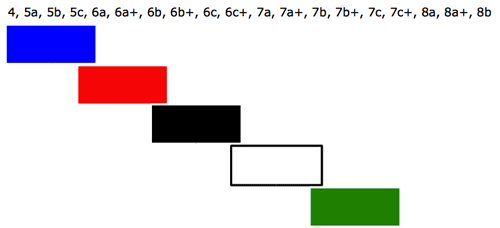
At the moment I’m not sure if this is a regional thing or just a Klättercentret
thing.
One thing I can tell you is that, at first, I was very, very confused! I’d
expected a different grading system, but when I first walked up to the wall in
Telefonplan, I seriously had no idea what was going on. Of course, I tried to
figure out what other people were doing, but I’m not used to looking at the
color of holds.
Until I realized what was up, I just figured everyone was improvising their
own problems. Also, at the time I hadn’t realized that the vast majority of the
bouldering area at Telefonplan was on a different floor. Those things combined to
make me wonder if I was in some special kind of hell where bouldering was just a
joke.
What finally made it click for me is when I found a long overhanging problem
comprised entirely of bright orange holds. Once I saw that, everything clicked
into place and I could suddenly see all the problems everywhere! There were
quite a few excellent problems, and overall it was a great session.
Thoughts on this style of setting:
Grading. The approximate grading is something I can appreciate. It lets
you walk up to a problem and have a general idea of what it’s going to be
like, but without forming preconceptions of whether or not you can handle it.
Moreover, it reflects the reality of a gym problem where grading is inexact
and approximate, based on the perception of a single setter.
Visibility. Once you get used to the idea, identifying holds based on hold
color isn’t that different from tape color. You do have the same problem as
with tape where similar adjacent colors can be difficult to pick apart. In
some cases, you have an additional problem where heavily-chalked holds become
difficult to identify.
Style. Each problem definitely takes on a certain style based on the type
of hold used. I imagine this could be really handy when you want to train a
specific skill. If you pick a problem that starts with a sloper, it’s going to
be full of slopers that came from the same set. Same with crimps, or jugs or
pockets or what-have-you. As an example, I’ve set something similar before
using a single set of bright pink crimps, and it was great for training crimps.
All that said, I’m still not sure about this system. In a way, I’m sure it
encourages creativity, as limits and constraints tend to do.
Yet, the fact remains — with a given set of holds, you can
express more problems and permutations if you can mix holds of different colors.
Then again, the point of setting is to create challenging, climbable problems,
not just to mathematically optimize your theoretical problem space.
